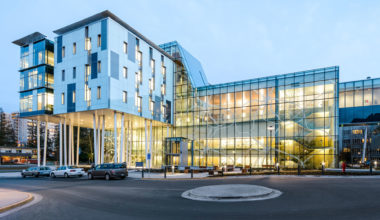The annual Neuroscience Extravaganza went back to its roots on December 8, 2016, returning to its original location in the Koerner Pavilion. The success of the event speaks to the commitment of our researchers and enthusiasm of our students. It is our pleasure to announce the top posters in each of three categories:
Cellular and Molecular
- Targeting MAPK phosphorylation sites of the Connexin43 C-terminal tail provides neuroprotection in stroke (M. Freitas-Andrade, N. Wang, J. Bechberger, P. Lampe, l. Leybaert, C. Naus)
- TLR4-mediated increase of microglial glycolysis inhibits expression of LTP through IL-1β (Elisa York, Jingfei Zhang, Hyun B. Choi, Rebecca W.Y. Ko, Brian A. MacVicar)
- The X-linked Disability Gene, DHHC9, in Neural Circuit Formation (Jordan J. Shimell, D. Blair Jovellar, G. Stefano Brigidi, Igor Tatarnikov, Dayne Beccano-Kelly, Austen J. Milnerwood & Shernaz X.Bamji)
Clinical
- Effects of Injury Severity on MicroRNA Expression in CSF and Serum of Human Patients with Spinal Cord Injury (Seth Tigchelaar et al, Brian K. Kwon)
- Aerobic exercise can induce dopamine release in Parkinson’s disease: Raclopride PET study (Matthew Sacheli et al.)
- Brain Connectivity Network Dynamics Are Correlated with Cognitive Performance in Multiple Sclerosis (e-poster) (Sue-Jin Lin et al. and Martin McKeown)
Systems and Behaviour
- Multiple spatial and temporal orders of cortical mesoscale spontaneous activity are present in in GCaMP6 mice. (Vanni M, Chan A, Balbi M, Silasi G, Murphy T)
- Modulation of nucleus accumbens dopamine efflux and reward-seeking behaviour in rats following electrical and optogenetic stimulation of the afferent glutamate projection from the ventral subiculum (David Lindenbach et al.)
- Investigating the ascending and descending prefrontal -midbrain projections using optogenetics: Implications for the regulation of motivation for sustained effort (Ali Haratikia, Barak Caracheo, Natalia Gorelova, Karl Deisseroth, Jeremy Seamans)
The event was well-attended, with as many as 80 people, including faculty, postdocs and graduate students, participating in the presentations and judging.
“The success of the event really comes from the involvement of our Neuroscience Graduate Student Association, who played an active role in organizing the event,” says Dr. Tim O’Connor, Director of the Graduate Program in Neuroscience. “Dr. Tim Murphy was also a critical asset in planning and hosting the event. We’re grateful to everyone who was involved and helped pull the 2016 Neuroscience Extravaganza together.”


